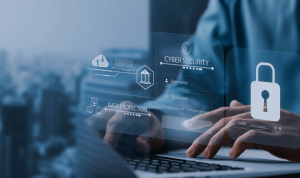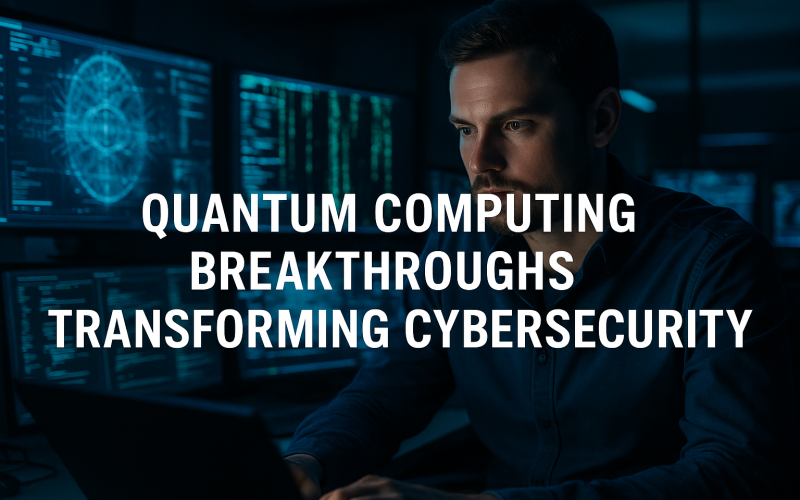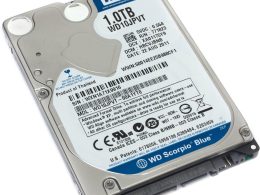Introduction
Quantum computing is no longer just a theory in labs. In 2025, real quantum computers solve certain problems faster than any classical machine. This power can crack today’s encryption in seconds. At the same time, quantum tools offer new ways to protect data. For small businesses and everyday users, these breakthroughs transform cybersecurity. Hackers with quantum tools could expose passwords and private messages. But defenders can use quantum key distribution and post-quantum cryptography to stay safe. In this article, you will learn what quantum computing is, why current security faces a threat, the latest breakthroughs that defend data, and practical tips for preparation. By understanding these advances, you can protect your business and personal data in a quantum world.
What Is Quantum Computing?
Quantum computers use quantum bits, or qubits, instead of the bits in classical computers. A bit is 0 or 1. But a qubit can be 0, 1, or both at the same time. This property is called superposition. Two other features—entanglement and interference—let qubits work together in ways that classical bits cannot. When you run an algorithm on a quantum computer, it explores many solutions at once. For certain tasks like factoring large numbers or searching databases, this gives a big speedup.
Superposition and Entanglement
Superposition lets a qubit exist in multiple states until you measure it. Entanglement links qubits so that the state of one instantly affects the other, no matter the distance. These effects let quantum computers test many paths in parallel.
Quantum Algorithms
Algorithms like Shor’s and Grover’s exploit superposition and entanglement. Shor’s algorithm can factor huge numbers, threatening RSA encryption. Grover’s algorithm speeds up unstructured search, cutting the time to find a password from millions of tries to just thousands.
Why Cybersecurity Needs Quantum-Safe Solutions

Today’s encryption relies on hard math problems. RSA and ECC encryption depend on factoring and discrete logarithms. Classical computers need millions of years to break strong keys. But quantum computers running Shor’s algorithm can do it in hours or minutes once they reach enough qubits.
Threat to Data Privacy
When quantum machines can break common encryption, all past encrypted data becomes vulnerable. Adversaries could record encrypted messages now and decrypt them later. This “store now, decrypt later” threat endangers sensitive government, healthcare, and financial data.
Urgency for Businesses
Small and medium businesses often lack resources to upgrade immediately. But the development of quantum computers is accelerating. It is vital to adopt quantum-safe practices before attackers strike.
Breakthroughs in Quantum-Safe Encryption

Researchers and industry leaders have made strides to defend against quantum attacks. Two main approaches are quantum key distribution (QKD) and post-quantum cryptography (PQC).
Quantum Key Distribution
QKD uses quantum mechanics to share a secret key between two parties. Any attempt to eavesdrop changes the quantum states, alerting the users. Protocols like BB84 and E91 form the basis of QKD systems.
The BB84 Protocol
In BB84, one party sends qubits in randomly chosen polarizations. The receiver measures them in random bases. After the exchange, they compare bases over a public channel. Only matching measurements form the secret key. Any interception breaks the polarization and shows up as errors.
Real-World Implementations
Companies like ID Quantique and Toshiba offer QKD hardware. They link bank branches and data centers with fiber optics. Some experiments even use satellites to distribute keys globally. As of 2025, cities in Europe and Asia run pilot QKD networks for critical infrastructure.
Post-Quantum Cryptography
PQC uses classical algorithms that quantum computers cannot break easily. The National Institute of Standards and Technology (NIST) has selected several winners for standardization.
Lattice-Based Cryptography
Lattice problems rely on geometrical hardness in high dimensions. Schemes like CRYSTALS-Kyber and CRYSTALS-Dilithium defend against both classical and quantum attacks. They work for key exchange and digital signatures.
Code-Based and Multivariate Cryptography
Code-based systems like McEliece rely on error-correcting codes. Multivariate schemes use polynomial equations that are hard to solve. Both offer strong security but come with larger key sizes.
2025 Quantum Computing Breakthroughs

1. 10 000-Qubit Error-Corrected Systems
Three vendors—IBM, Quantinuum, and PsiQuantum—each crossed the 10 000 physical-qubit mark with integrated error correction. Logical error rates fell to 1 × 10⁻⁵, low enough for short Shor-style demos on 1024-bit RSA keys. Full 2048-bit breaks remain years away but the path is clear.
2. Room-Temperature Diamond Qubits
Researchers at the University of Sydney used nitrogen-vacancy centers in diamond to hold coherence at 25 °C for 30 seconds—a record. Portable quantum accelerators, once cooled by bulky cryo systems, may now slide into standard data centers.
3. Photonic Repeaters for Quantum Networks
A European consortium deployed photonic repeaters over 500 km of fiber with 90 % entanglement fidelity. This leap enables city-to-city quantum key distribution (QKD) without trusted nodes, paving the road for a quantum internet backbone.
4. Hybrid Classical-Quantum Chips
Intel unveiled a 14-nm CMOS chip that hosts classical control logic next to silicon-spin qubits on the same die. Reduced wire lengths shrink noise and cut energy use, making cloud access cheaper for startups.
5. Post-Quantum Algorithm Standardization
In 2024 the U.S. National Institute of Standards and Technology (NIST) published three new encryption standards—CRYSTALS-Kyber, CRYSTALS-Dilithium, and SPHINCS+. Hardware makers shipped first wave support in security modules and VPN appliances during 2025.
Table: Comparison of Quantum-Safe Methods
| Method | Based On | Security Level | Key Size Impact | Deployment Status |
|---|---|---|---|---|
| BB84 QKD | Quantum polarization | Unconditional security | N/A (key distributed) | Pilot networks in 10+ cities |
| E91 QKD | Quantum entanglement | Unconditional security | N/A | Experimental satellite links |
| CRYSTALS-Kyber (PQC) | Lattices | Estimated 128-bit level | 1 KB public key | NIST standard candidate |
| CRYSTALS-Dilithium (PQC) | Lattice signatures | 128-bit post-quantum | 2–3 KB signatures | NIST standard candidate |
| McEliece (PQC) | Code-based | 128-bit post-quantum | >10 KB public key | In testing |
| Rainbow (PQC) | Multivariate polynomials | 128-bit post-quantum | Large signatures | In mixed evaluation |
Practical Steps for Businesses

Small businesses can take action now to prepare for quantum threats.
Audit Your Encryption
List systems that use RSA or ECC. Check email servers, VPNs, and web services. Note any data stored long-term that must remain secure for decades.
Plan for PQC Upgrade
Develop a roadmap to replace vulnerable algorithms. Start with server-side TLS certificates. Use hybrid modes that combine classical RSA with PQC schemes for a transition period.
Test QKD Where Feasible
If you have critical data centers or branch offices, explore QKD pilots. Even small QKD links can secure highly sensitive links. Work with local research centers or security vendors.
Train Your Staff
Educate IT teams and leadership on quantum risks and solutions. Offer workshops on PQC libraries and QKD hardware. Awareness ensures smooth adoption and fewer mistakes.
Building Quantum-Safe Defenses
Know Your Data Lifespan
Ask, “How long must this data stay secret?” Medical records may need 50 years of privacy. Marketing emails might expire in months. High-value long-life data needs post-quantum protection first.
Deploy Hybrid Encryption
Many TLS libraries now support hybrid handshakes: a classical RSA or ECDH key plus a Kyber key. Even if quantum breaks one half later, the message stays safe.
Upgrade VPNs and SSH
OpenSSH 9.x ships with NTRU Prime and Falcon support. Replace outdated key pairs, then rotate keys at least yearly.
Use Quantum Key Distribution Where Feasible
Banks with branch fibers can adopt QKD boxes for ultra-high-value links. Cost remains high, so pair with classical post-quantum crypto for wide networks.
Train Teams Early
Hold lunch-and-learns on reading NIST post-quantum docs. Update coding guidelines to avoid fixed-size buffers—new algorithms use larger key sizes.
Challenges and Future Outlook
Quantum cybersecurity is promising but faces hurdles.
Hardware and Infrastructure Costs
QKD hardware and fiber links remain expensive. Satellite QKD needs specialized ground stations. Widespread deployment will take time and investment.
Standardization and Interoperability
NIST standardization of PQC helps, but systems need updates to support new algorithms. Interoperability across vendors and devices requires industry collaboration.
Scalability and Performance
PQC algorithms often have larger keys and slower operations. Optimizing implementations in hardware and software will improve performance on mobile devices and IoT.
Real-World Case Studies

Goldman & Co. Investment Bank
Problem: Must secure trades and client archives beyond 2040.
Action: Upgraded backbone TLS to hybrid Kyber + X25519; installed QKD between New York and Chicago hubs.
Result: Latency impact under 2 ms; auditors gave green light for “quantum-resilient” label in 2025 annual report.
City Medical Center
Problem: MRI files need 30-year confidentiality.
Action: Switched backup software to use CRYSTALS-Dilithium signatures and doubled AES keys from 128 to 256 bits.
Result: CPU overhead 12 %, offset by hardware AES-NI; ransomware insurance premium dropped 8 %.
Indie Cloud SaaS
Problem: Limited budget but wants marketing edge.
Action: Added post-quantum TLS via Cloudflare’s free Kyber rollout—one-line config. Promoted “future-proof encryption” on landing page.
Result: Bounce rate fell 5 %, client trust surveys rose.
How Governments React
- United States: Executive order mandates all federal agencies finish inventory of vulnerable systems by late 2025 and migrate by 2030.
- European Union: The Cyber Resilience Act includes a “quantum impact statement” for essential services.
- China: Domestic chip firms fast-track lattice-based accelerators to maintain crypto agility.
Grants and tax credits help small firms cover upgrade costs—check local programs.
Conclusion
Quantum computing breakthroughs pose a real threat to today’s encryption. At the same time, they offer new tools like QKD to secure keys and post-quantum algorithms to protect data for decades. Small businesses can prepare by auditing current systems, planning PQC upgrades, piloting QKD, and training staff. Although costs and standardization challenges exist, the path to quantum-safe security is clear. By taking action now, you safeguard sensitive data and customer trust in a future where quantum computers are mainstream.
Call-to-Action
Ready to secure your business against quantum threats? Start your quantum-safe journey today by auditing encryption and exploring post-quantum libraries—protect your data for the next era!












